THE lush green hills surrounding Byron Bay were once home to thriving dairy farms. At the beginning of last century its hinterland, with rich red volcanic soil and plenty of rainfall, supported a booming dairy industry, with butter produced by the local Norco factory the shire’s main export.
But changes to the way the industry operated in the 1960s and 1970s and, later, its deregulation resulted in many dairy farmers either selling up or seeking other ways to make a living from their land.
Among the latter were Neil and Erica Holland, who had worked Erica’s family dairy farm since 1973, raising their sons Ivan and Jason on the 120-hectare property. Unable to practise sustainable dairy farming on their hilly land or invest in the new technologies required to stay competitive, they chose to move into beef cattle in 1989, but soon realised they needed to find creative alternatives to supplement their income.
So it was fortuitous they had begun receiving letters from people wishing to stay on their farm, which was located on a ridge line overlooking Cape Byron and situated just 7km from the beach.
Although farm tourism was non-existent in the area at the time, Neil and Erica bought four cedar-clad holiday cottages that were being sold off by the local golf resort, and relocated them to their farm with the assistance of their two sons. “It was a totally new idea, so there was nothing they could copy, nowhere they could turn to for advice,” says Ivan Holland today of his parents’ decision. “They were among the absolute pioneers of farm tourism in this area.”
A large lake that had been put in a few years earlier as a water security measure for the farm sat below the cottages and has since developed a diverse ecosystem of local aquatic and bird life, providing guests with a view and a place to swim and kayak.
The family wrote back to the people who had inquired about staying on the farm, and in 1995 Byron Bay Farmstay opened to guests – to a surprisingly strong response. Neil and Erica realised for it to be a truly viable business they needed six cabins and so, about 10 years after they started the farmstay, they added a couple of two-bedroom cottages.
Fast forward to 2018 and Byron Bay is now a tourist mecca, with more than 2 million visitors each year. About 15% of accommodation, or one in seven houses, is dedicated to short-term lets. For the Holland family, the tourism boom in the area has certainly had an impact, providing both benefits and new challenges.
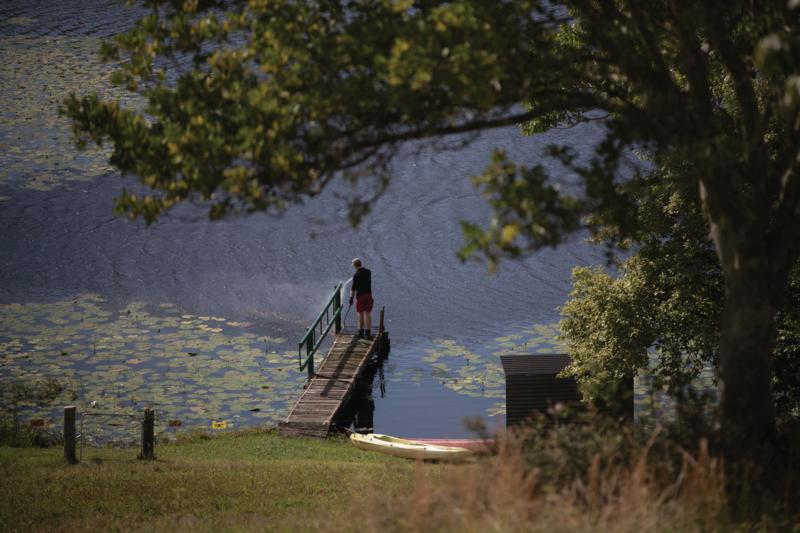 Ivan hoses down the jetty on the lake. The lake was originally built by Ivan’s parents as a water storage solution. Since then Ivan and Angela have done a lot of native regeneration on the outskirts of the lake, which has attracted over 70 species of local birds and aquatic life.
Ivan hoses down the jetty on the lake. The lake was originally built by Ivan’s parents as a water storage solution. Since then Ivan and Angela have done a lot of native regeneration on the outskirts of the lake, which has attracted over 70 species of local birds and aquatic life.
As the popularity of Byron Shire as a destination increased, so did Neil and Erica’s farmstay business. “It got to the stage where my folks were transitioning to retirement, but they were the busiest they’d ever been,” says Ivan. “They had managers in for five years, then in 2009 they asked if I’d like to take over.”
At the time Ivan, an environment scientist, and his wife Angela Grice, a marine scientist, were developing their professional careers on the South Island of New Zealand and starting a family. They decided to return for the sake of their children Josh, now 11, and Angus, nine.
“We saw it as an opportunity that we’d both get to spend more time being involved with the kids and also that a mild winter wouldn’t be too bad, especially with young kids,” Ivan says.
 The couple run both the farmstay and about 100 head of Angus/Black Baldy cross cattle on the property.
The couple run both the farmstay and about 100 head of Angus/Black Baldy cross cattle on the property.
At the start of 2010, Ivan and Angela took over management of the farmstay. Three years later they bought the cattle herd from Neil and Erica and assumed the main farm management role as well, with Ivan’s parents in a supportive role. Having left the farm as a teenager, Ivan found there was a bit to learn about the “nitty gritty” of the business.
With about 100 Angus/Black Baldy cross cattle, two young children and a farmstay business to manage, Ivan and Angela have their hands full. The couple run a nursery farm, raising vealers and selling off most of their calves at around 200kg (or nine months) when they are then sent out west to fatten up.
“Our farm is really hilly so we get envious when we go out west and see all these lovely flat farms – because we’re on an angle, we’re on the tractor all day. But we can’t complain because we do get a good rainfall and have really rich red soil,” says Ivan.
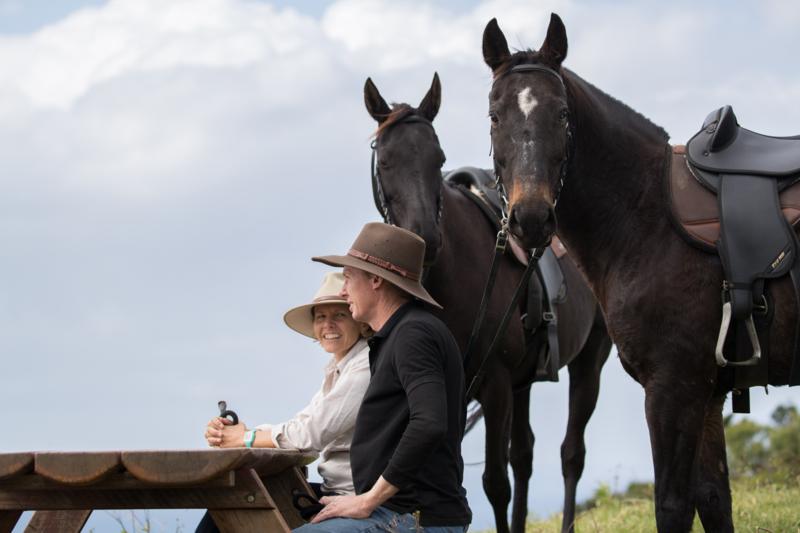
Early on they realised the two income streams were necessary, but most of their earnings were coming from tourism. These days, potential guests just jump on their website, says Ivan. “We get bookings online while we’re asleep.” Although the farmstay business grosses significantly more than the cattle, there are lots of expenses. “At least 50% of our gross income would go in expenses for the farmstay.”
HOW DO THE COSTS OF COMPETITION WEIGH UP?
Competition in the area is steep, so they allocate $10,000 to $30,000 a year for upgrades and renovations. Ivan says that while guests are only willing to pay for three-star accommodation, they expect at least four-star facilities.
“Our cottages look rustic on the outside because they’ve got original cedar cladding, but everything on the inside is less than five years old,” he explains. “With online reviews these days, you very quickly find out whether you’re hitting the mark or not, so you can’t just be complacent and kick back for the next five years. That approach just doesn’t work.”
Other general maintenance costs include linen hire, repairs and insurance, which is a significant yearly fee. Ivan and Angela’s vision was always to offer an authentic farm experience, where guests could explore on their own, and this is an approach they would recommend to other farmers thinking about setting up in the business.
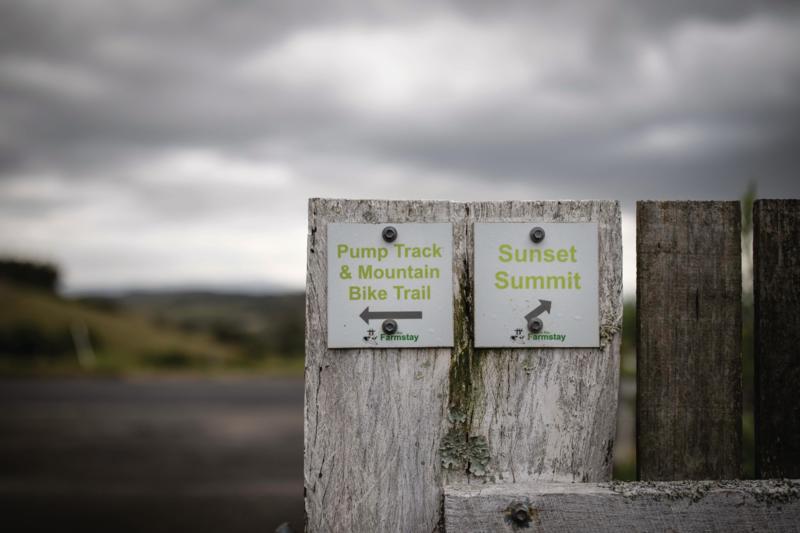 Signs point the way to on-farm attractions.
Signs point the way to on-farm attractions.
On arrival, their guests are given a run-down of the property and are encouraged to explore it as much or as little as they like. The resident cattle are free to roam around the property and can often be found grazing near the cottages.
“We never really know what we’re going to get until people turn up, so that’s quite fun,” says Ivan. “Some people won’t go near the lake whereas other people will be kayaking, swimming and fishing. Some kids even set themselves up in the chook pen for hours. If our guests would like our input and interaction, we’ll jump in and get involved. Otherwise we’ll leave them to their own devices.”
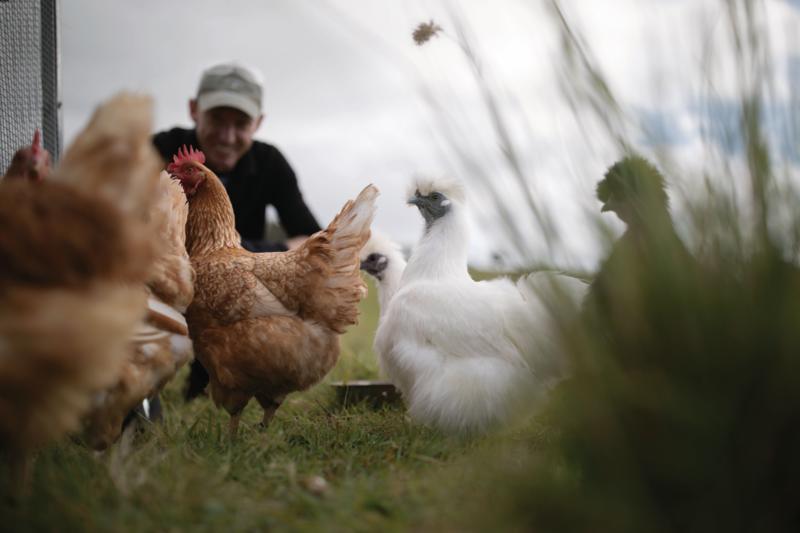 The chook pen is a hit with the younger guests.
The chook pen is a hit with the younger guests.
They renamed the business
Byron Bay Farm Cottages earlier this year to better reflect the style of accommodation. “We were always a bit concerned people might think farmstay meant guests would stay in our house with us, or were expected to spend their weekend doing the farm chores,” says Angela.
The six cottages are full most weekends with peak season at Christmas and school holidays. Sharing your backyard all year can be tough at times, though. “Sometimes you do get host fatigue and after a while you do need to have a break – but it’s quite hard to do so because it means no income from that part of the business,” Ivan says.
He often dons his scientist hat by doing a lot of revegetation work on the farm. He and Angela are members of their local Landcare group and are working to restore patches of rainforest on their property. Thanks to their large-scale regeneration efforts, the rainforest area has doubled in the past 20 years, providing a home to more than 70 bird species, with the lake and adjoining waterways offering a vital habitat for birds, frogs and platypuses.
*READ about Alpaca farmers Angela and Matthew Smith from Murrumbateman who are creating markets for niche products that’s helping supplement their on-farm income.
IS THE TOURISM INDUSTRY STILL VIABLE IN THE CONTEMPORARY SHARE ECONOMY?
To date, short-term holiday lets in NSW have been unregulated, and the rise of platforms such as Airbnb have posed a significant challenge to existing tourism operators like Ivan and Angela. There are currently almost 3,000 properties listed on Airbnb in Byron Bay.
“It is not a level playing field,” Ivan says. “We’ve all gone through full council approval process, paid massive fees and insurance costs and complied with fire safety regulations. Airbnb properties don’t do any of that, so they have no compliance costs. For us to compete with them and still cover our costs and make money is becoming really difficult.”
In June, the NSW government announced a proposed new state-wide planning framework and mandatory industry self-regulation on short–term holiday letting. If the new measures are passed, anyone will be legally entitled to list their property on sharing platforms such as Airbnb without prior council approval.
Minister for Innovation and Better Regulation Matt Kean says the new framework will support the sharing economy and give consumers more choice.
Ivan, however, says the measures will be “devastating” for local letters in the area. But he doesn’t wish to paint a doom-and-gloom scenario. Those offering unique accommodation options – such as farms – will be less affected by the changes. “And every business has challenges,” he says. “You’ve just got to try and make sure you’ve got a bit in the bank so you can bounce through some of this stuff.”
“I wouldn’t trade where I live or what I do for a second. This is a wonderful way to make a living.”
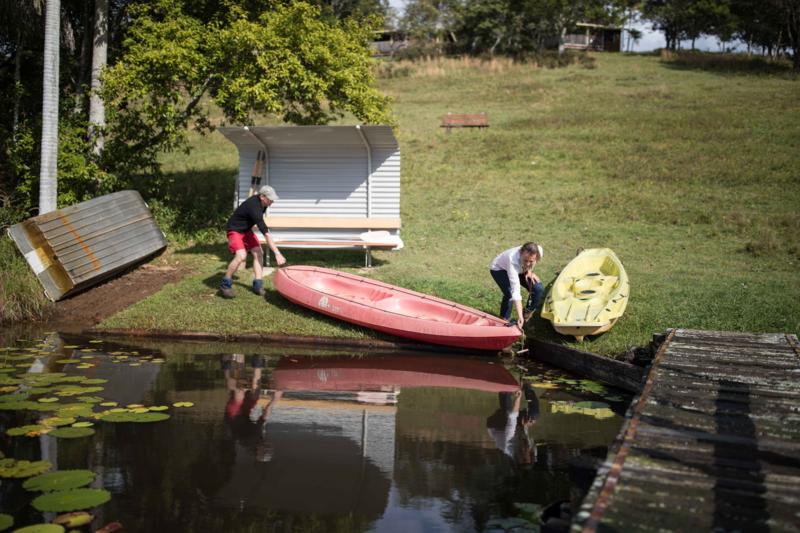 THE ONE-POUND FARM
THE ONE-POUND FARM
Farming runs deep in Ivan Holland’s bloodline – the Byron Shire farm which he and Angela now run has been in his family for more than 100 years. Ivan’s ancestors came to to the area from the Southern Highlands in 1881 and bought a 259-hectare parcel of land to farm.
About 20 years later, Ivan’s great-grandfather JJ Hayter established a dairy farm on Hayters Hill, the site of today’s farmstay. The farm cost one pound and came with the requirement to clear the land.
Before long, the Hayters had two cream farms supplying milk and homemade butter to the local settlers and tree fellers who arrived to fell the towering cedar trees.
“We’re 120ha now but that is a fairly small portion of what the original holding would have been,” says Ivan.
Byron Bay has a long history of dairy farming and in the 1900s was one of the most productive dairy areas in the world. Ivan’s family records show the area’s rich fertile soil produced more butter per acre than anywhere else on earth.
“That was back when Byron Bay was an industrial town,” says Ivan. “We had a whaling station, an abattoir, milk factory and piggery all in the heart of town. It now seems funny because of all the New Age hippies and yuppies, but the town was an agricultural service town.”
Much of Ivan’s extended family is still scattered throughout the area. His cousins David and Hugh own Hayters Hill Farm next to Ivan and Angela’s property, and have adopted the “paddock-to-plate” approach, selling their beef and eggs at farmers’ markets and on to local cafes and restaurants.
*READ more about the success of farming families: The Munro family run Booroomooka Beef, one of the largest Angus studs in Australia. Their ancestors have been farming the same land for over 160 years.
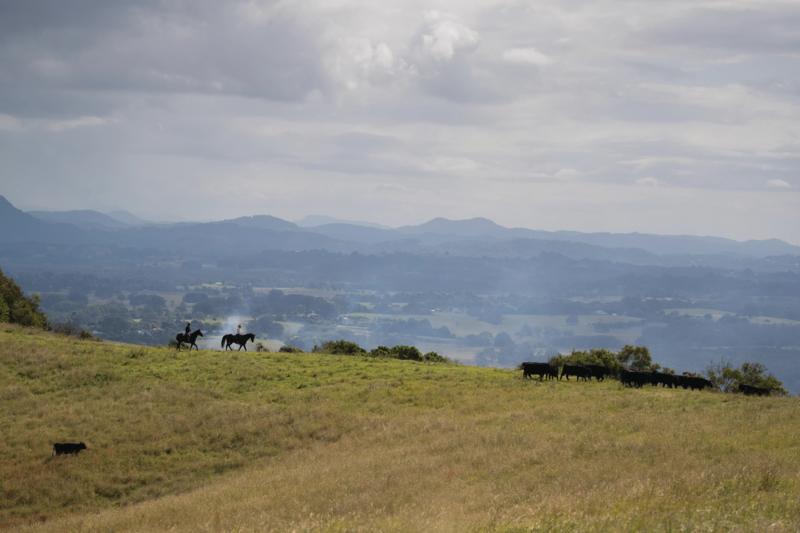 The couple ride along the ridge to inspect their cattle.
‘A CENTURY OF FARMING BITES THE DUST’
The couple ride along the ridge to inspect their cattle.
‘A CENTURY OF FARMING BITES THE DUST’
In 1989, The Northern Star newspaper ran an article on the closure of Neil and Erica Holland’s dairy business. Below an edited extract.
The most easterly dairy farm in Australia closes its gates for the last time today. The 199-hectare property operated by Neil and Erica Holland was settled by Erica’s ancestors, the Hayter family, in the 1890s.
In 1895 a central creamery was set up at Byron Bay. The Byron Bay factory was the largest producer of dairy products in the Southern Hemisphere and dairy cattle entries at the Bangalow Show exceeded the number at the Royal Easter Show in Sydney.
Neil and Erica Holland took over the dairy farm in 1973, sick of the rat race in Sydney where they were teachers.Not only was it the last dairy farm to stop operating on the Byron-BangalowbRoad, but it also ended the family’s 100-year association with Norco. Erica’s grandfather JJ Hayter was elected to the board of Norco in 1923 and was chairman from 1927 to 1939.
“There are a number of reasons for closing the dairy,” said Neil Holland. “We cannot practise sustainable dairy farming on these hills. Putting in crops creates erosion and the soil fertility
is dropping. The improvements in irrigation, pasture grasses and farm management now means dairy farming in other areas is more economical.”
“We could not sell the farm as a going concern because of the cost of the land. It is also getting harder to find labour or share farmers. There is still scope for dairying, but not here.”